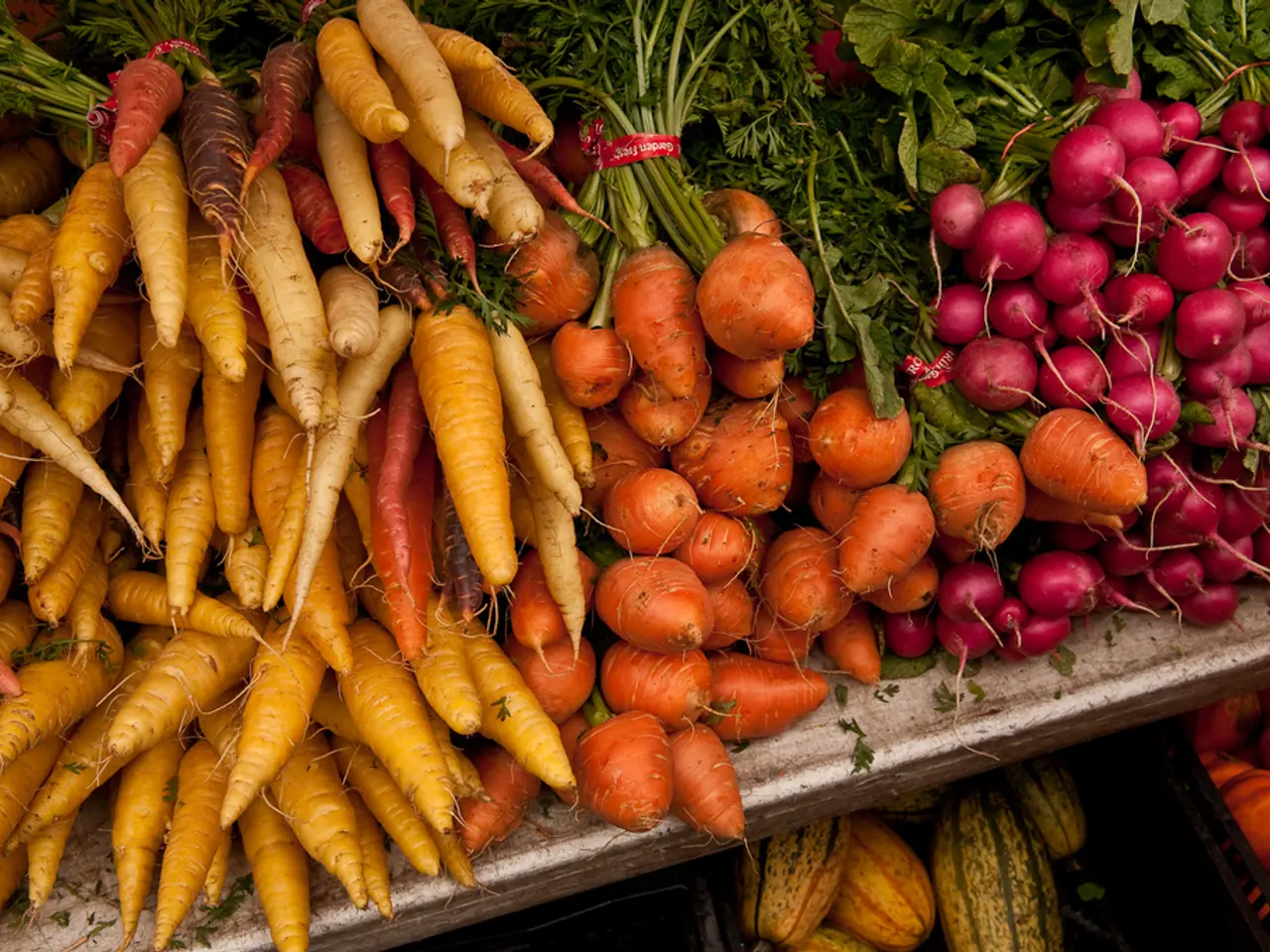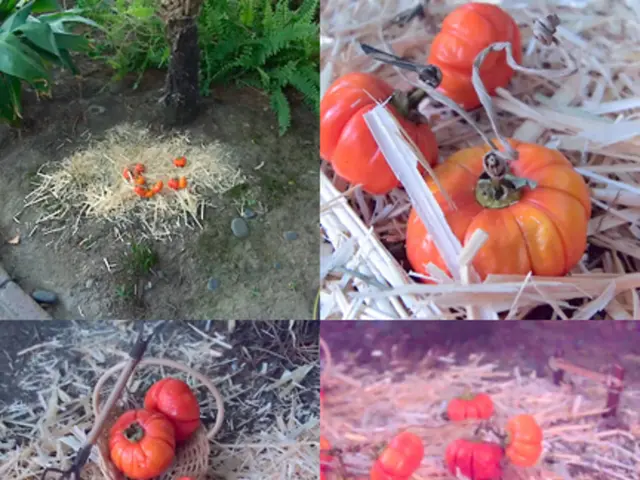Guidelines for Nurturing and Maintaining Kohlrabi Plants
Kohlrabi, an uncommon vegetable with a mild flavor similar to broccoli or turnip, is a delightful addition to any garden. This globe-shaped vegetable, with its fleshy green or purple bulbs growing beneath green or purple leaves, is not only visually appealing but also nutritious. Kohlrabi is a good source of dietary fibre, calcium, vitamin C, and iron.
For those interested in growing kohlrabi, here's a comprehensive guide.
Planting and Soil
Kohlrabi seeds can be sown under cover for an early crop or directly outside from spring and through summer. To ensure successful growth, sow the seeds about ¼ inch deep in loose, fertile soil 4 to 6 weeks before the last frost. Seedlings should be thinned to about 6 inches apart to allow room for bulb development.
Watering and Care
Kohlrabi requires consistent moisture to develop tender bulbs. Water deeply whenever the top inch of soil feels dry. Mulching helps retain moisture and suppress weeds.
Pest and Disease Management
Protect young plants from slug damage by using physical barriers or slug control methods. Kohlrabi is generally disease-resistant, but monitoring for common cabbage family ailments (like fungal diseases and aphids) is advised. Maintaining proper spacing and moisture can help reduce disease incidence.
Harvesting
Harvest when the bulbs reach about 3 to 4 inches in diameter for best tenderness. Smaller bulbs can be picked earlier if a more delicate texture is desired. Overgrown bulbs may become woody.
Varieties and Availability
Green kohlrabi varieties are suitable for spring and early summer sowings, while purple varieties are suitable for summer sowings. Specialist seed suppliers offer the widest range of kohlrabi varieties. Young plants or plug plants may be available to buy in late spring.
Harvesting and Storage
Kohlrabi should be harvested until December, or before if the leaves start yellowing. Kohlrabi is best eaten fresh but can be stored for a short time in the fridge.
Pests and Diseases
Cabbage root fly can affect kohlrabi, causing weak, dying plants and maggot-like larvae that eat the roots. White butterflies can cause caterpillars on kohlrabi leaves. Flea beetle can cause tiny holes in kohlrabi leaves. Whitefly can cause clouds of white flies on kohlrabi leaves. To prevent clubroot, avoid growing brassicas in the same soil for several years and regularly add lime to acidic soils.
Growth Conditions
Kohlrabi should be grown in a sunny site in light, fertile soil. Kohlrabi works well with Indian spices.
Prevention and Treatment
To prevent clubroot, avoid growing brassicas in the same soil for several years and regularly add lime to acidic soils. If clubroot is detected, do not replant brassicas in the affected soil for at least seven years.
Cooking and Consumption
Kohlrabi is edible raw or cooked, and its leaves can be eaten steamed like spinach. Kohlrabi is filling and high in protein, making it a good alternative to meat in recipes.
Sources for kohlrabi seeds and plants include Crocus, Suttons, Thompson & Morgan, and Rocket Gardens.
Growing kohlrabi in cool weather with moist, fertile soil, protecting seedlings from slugs, and harvesting bulbs at 3-4 inches diameter for best quality are crucial steps for successful kohlrabi cultivation. Consistent watering and proper spacing are crucial throughout the growing cycle.
Start transforming your home-and-garden lifestyle by taking up gardening and growing kohlrabi, an uncommon yet nutritious and visually appealing vegetable. Incorporate kohlrabi into your home garden by cultivating it in a sunny site with light, fertile soil, using high-quality seeds that can be sourced from Crocus, Suttons, Thompson & Morgan, and Rocket Gardens.






